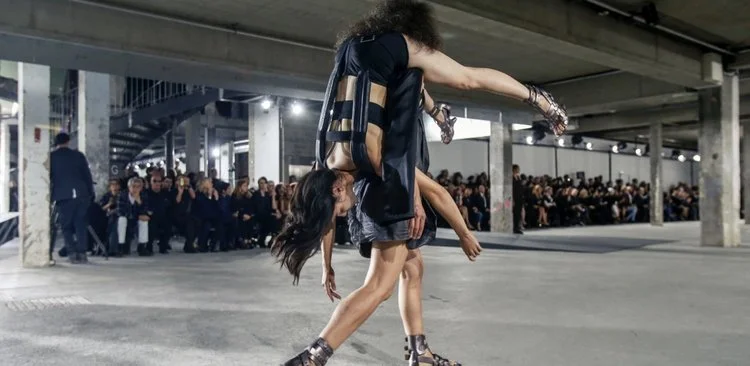Photo: vogue.com
The runway show has come a long way since its inception back in 19th century Paris. First introduced by the ‘father of haute couture’ Charles Frederick Worth, it replaced presentations of the day that simply featured static mannequins. But the once-simple fashion show, witnessed by an intimate audience, has itself evolved, and is now more often than not a global presentation, accessible to all, albeit virtually.
Burberry's Regent Street Flagship / Photo: Nirvanacph.com
To cater to the growing demands of fashion’s consumers in today’s digital age, many designers now eschew the traditional catwalk show in favour of a more experience-based presentation. Alexander McQueen was well known for his unique and sometimes extreme theatrics, and fellow designers have since followed his lead, to varying degrees. For example, Rick Owens caused quite a stir during the 2014 Spring/Summer shows in Paris when he hired a dance troupe to present his collection. In New York last year, Gareth Pugh’s Spring/Summer 2015 designs were showcased via an immersive presentation of music and dance, and Opening Ceremony put on a one-act play, directed by Spike Jonze, satirizing the stereo-typed backstage goings on at fashion week.
Alexander McQueen SS 1999 / Photo: Harpersbazaar.com
While it may sometimes seem that these elaborate presentations overshadow the clothes they are designed to promote, a designer’s clever choice of setting, music and context can help to enhance their collections, and more clearly communicate the message and inspiration behind the designs. For SS16, two shows stood out as powerful presentations with beautiful context.
This spring/summer season, Rick Owens once again garnered column inches in many a fashion week review for his sartorial tribute to female strength. While the clothes reflected the American designer’s now well-defined signature, the traditional catwalk show was turned on its head, literally. Dubbed She Ain’t Heavy, She’s My Sister, by Tim Blanks, the presentation involved models carrying each other down the length of the runway, some hanging upside down with legs slung over their partners’ shoulders - “…an emotional metaphor for selflessness and community” wrote Blanks, about the instinctive female supportiveness that Owens wanted to celebrate.
Belgian husband-and-wife design team An Vandevorst and Filip Arickx brought their AF Vandervorst road trip- and wandering woman-themed collection to life before their show even started. The roar of motorbikes could be heard from the courtyard outside the Faculté de Médecine Paris Descartes, signaling the arrival of leather clad models, who arrived riding pillion before taking to the runway. The trip, a journey from east to west, saw the duo’s typically tailored silhouette take on a softer feel, featuring gauzy, voluminous floor-length skirts, sheer simple tops, Indian and Chinese influenced embellishments. And when the show came to an end, its participants once again sped off en masse. An Vandevorst explained:“It’s a road trip by a woman who lives in the East and has traveled to the West.”
The answer as to whether added context simply results in smoke and mirrors, or whether it contributes to an unforgettable presentation of the collection, really may end up being down to the clothes themselves. Despite Rick's models' acrobatic feats and the awe-inspiring live songstress in the background, the clothes stood out. Capturing this notion exactly, renowned critic Cathy Horyn's write-up for NYMag.com read: Nevermind the Feminist Soundbites, Rick Owens Jst Showed His Best Clothes Yet. We look forward to seeing what Rick, and other designers who manage to seamlessly blend their show's elements together, do next.




